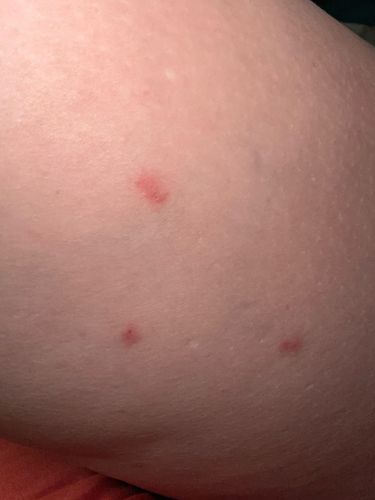Bed Bug
Scientific Name: Cimex lectularius
Order & Family: Hemiptera, Cimicidae
Size: Adults are typically 4-5 mm (about the size of an apple seed).

Natural Habitat
Mostly indoor environments where humans or animals sleep or rest, such as beds, mattresses, bed frames, furniture, cracks in walls, and crevices.
Diet & Feeding
Exclusively hematophagous, meaning they feed on blood, primarily human blood.
Behavior Patterns
Nocturnal, hiding during the day and emerging at night to feed. They are attracted to carbon dioxide and body heat. Bites often appear in lines or clusters.
Risks & Benefits
Potential risks include itchy red welts (like those shown in the image), allergic reactions, secondary skin infections from scratching, and psychological distress. They are not known to transmit diseases to humans. There are no known direct benefits to humans or the ecosystem.
Identified on: 9/7/2025